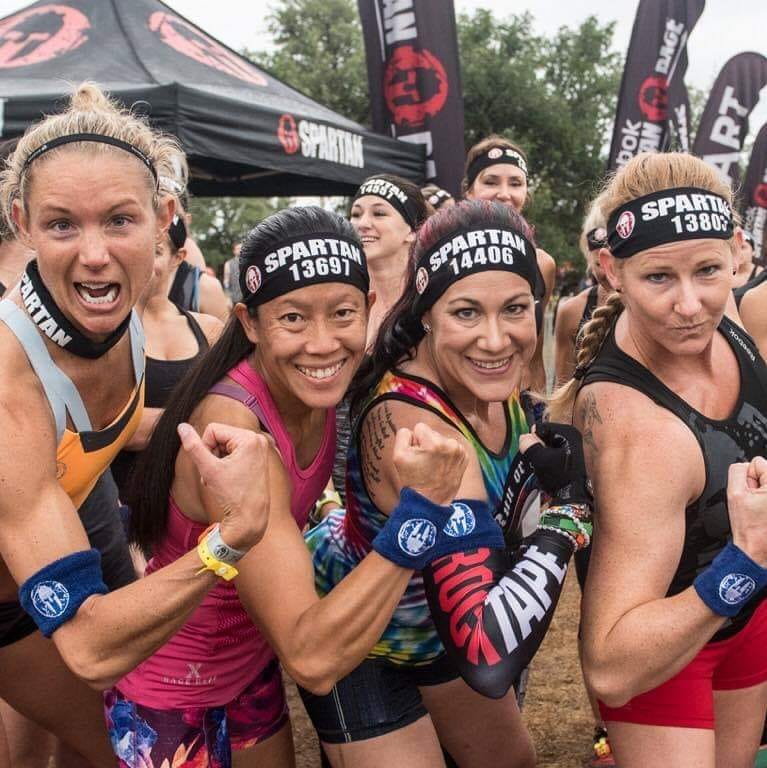Motivation can feel fickle, particularly in times when we have large gaps between our goal races. For those of us that are limited in our ability to travel, financially or otherwise, the large gaps between races can make it difficult to stay on track with a workout plan and impede efforts to measure progress towards our goals. Without progress markers or competition, how do we motivate ourselves to stay on track despite the competing pressures and demands of life?
Good news: you can, in fact, harness some control over your motivation by enhancing your self-regulatory strategies. Self-regulation is defined by Zimmerman (2002) as a person’s ability to maintain task orientated in the face of competing pressures and demands. The following list describes different strategies to encourage self-regulation despite gaps in OCR races during the season.
Backward map your training.
Backward design, or mapping, is utilized in the education field to build learning experiences that help achieve specific goals (Wiggins & McTighe, 1998). A similar strategy can be used to map out your training during large stretches of time between races. In order to do this, it is important to have an established, or overarching, goal.
Overarching goals, like getting a podium, aren’t necessarily bad because they lack specificity. These goals are for a different purpose- instead of giving us informative feedback on progress, they inform us of the arena that we want to improve within. In order to improve, we need to break up our goals into components of improvement. This is particularly useful in OCR where there are many facets to improvement and progress in the sport. Consider the visual:
The overarching goal here- getting better at Spartan racing- can be broken down into the components that make someone a better racer. For example, the components that I might want to improve on are listed beneath the umbrella. Each component represents an essential area that I need to improve in so that I can reach my overarching goal. Using this strategy, I can then set specific goals related to each component. This will help me design training experiences where I can receive feedback about my progress. This leads us to…
Set training goals that are specific and measurable.
A major part of being a self-regulated individual is the forethought phase, where individuals set their goals, consider their beliefs about their abilities, and consider/select the strategies they will use to achieve these goals. We have all heard of setting SMART goals- goals that are specific, measurable, attainable, relevant and timely. In application, however, sometimes we lose sight of these goals. This is where specificity becomes a priority. For example, if your goal is to get better at uphill running consider the differences between the following:
Goal 1: I want to get better at running
Goal 2: I want to improve my uphill 1 mile time (currently X:XX) on the treadmill at 15% incline by 10 seconds
In the first goal, the improvement remains ambiguous. We quickly lose sight of where we began, which can be toxic to our sense of improvement. The second goal adds a controlled environment (treadmill and incline percentage) that can be tested and retested in order to track and measure progress. It also adds a tangible improvement that you are aiming towards.
In our visual above, this goal would fall under the component of uphill running. While there are many things that you can work on at the same time to improve your uphill running, having a primary goal to measure your progress is essential to staying on track, testing progress, and celebrating your improvements.
Give yourself opportunities for feedback and reflection on your progress.
Feedback is an essential component of self-regulation and enhancing your underlying motivation. Think of self-regulation as a cycle that informs each other- how you think about your goals influences how you train, the way you train impacts the way you perform, and the way you perform impacts the new goals that you will set. The lack of feedback between races can cause our motivation to dwindle as we become more and more removed from the recency of the experience.
Feedback does not have to be limited to races. Race feedback may be more meaningful and thus, more powerful in motivating you to create goals that are connected to your recent task-specific performance. However, feedback can be implemented into training to prolong this motivation and give you the ability to move through the self-regulatory process while still improving in your individual training.
Say you have an overarching goal of getting an Age Group podium at a Spartan race. Large gaps between races limit the feedback that you can get and reflect on relative to your overall goal. For example, it's hard to stay motivated when you aren’t informed about your overall place relative to others in your age group. However, if you break down the overarching goal into major areas of improvement and focus on your primary goals within each component, this can give you far more opportunities for feedback during training. This feedback then informs your strategy selection during the training process, your expectancy for success, and your beliefs about what you can do.
These are all powerful areas that influence motivation and future performance. In training, you can give yourself feedback opportunities by adding in days where you test yourself against your goals. For example, if you have a goal to improve your one mile incline time by a certain amount of minutes, have a day planned where you will test your one mile incline time. If your goal is to increase your dead hang time by a certain amount of seconds, have a day where you test your dead hang time. These can all be done on the same day- or they can be done at the start of another workout. There is a lot of flexibility on where and when you can implement these. They do need to be planned and recorded.
Oftentimes, people avoid testing themselves during training because they are afraid they will not meet their goals. Avoid shame-related thoughts when you don’t achieve your goal. Instead, acknowledge your disappointment but write down the specific areas where you can improve your training. Keep track of your time but also keep track of the way you feel. Don’t be afraid to modify your plan based on your reflections. These insights, along with the outcomes of your tests, allow you to make smart changes to your training and state of mind.
Race locally and develop a pre-race/post-race plan.
Limited by finances or family demands? Racing locally can give you the competition that you crave as well as information about how your training plan is working. If you’re trying to improve your run, schedule local races into your training plan. Racing more frequently can give you more information about your pace, your progress, and your mental strategies on race day.
Many training plans for running encourage you to race during your training as these are low stakes opportunities for you to practice. Having an opportunity to develop a pre-race process can help you to select appropriate fueling strategies, learn about your sleep needs, and identify any struggles that you might need to address in training. Pre-race anxiety is real, and learning how to handle it in low stakes opportunities can be beneficial when you reach your goal race, which has distinctly higher stakes associated with it. These races give you the opportunity to get that playlist in place, figure out your breathing techniques, and nail down your warm-up before you reach your goal race.
Racing opportunities act as performance benchmarks. While testing during training is extremely beneficial, racing benchmarks allow you to compete and test yourself against others, even if the task demands aren’t necessarily the same. They give you more information and more power over your future race goals, particularly in controlling and practicing your mental strategies for race day.
Join (or create) a group!
Part of what makes OCR so magical is the community. The more you race, the more you get to interact and develop relationships with other people who are doing similar events and have similar goals, interests, and lifestyles. Not racing means you lose touch with some of the people that have become part of your community.
According to Baumeister & Leary (1995) belonging is a central motive for us to act. When you are the only one working towards your goals it can become tedious, particularly if you are used to working in a team. While nothing can substitute for the feeling of comradery we experience at OCR races, we can develop lasting relationships with others that are interested in the same experiences. These relationships can create a feeling of belonging that enhances our motive to train despite being removed from the direct environment.
There are many established places where we can find people with similar interests to us. Look up local training groups or post in the Spartan Open, Age Group, or Elite pages to find out if there are local groups that meet to train. If not, there are many online training groups that allow for interaction with the Spartan community and help you work towards achieving these goals. You can establish a motivating environment by finding or creating a space where people can ask each other questions, share goals and progress, and celebrate each other’s accomplishments.
A reminder…
Finally, stay focused on your future goal race but also remember self-care. For many of us, races and training act as a reason that we nurture our health and wellness. Find time in the day that is for just for you to enjoy, whether it be training related or not. Just because you do not have an upcoming race doesn’t mean that your time to take care of yourself is any less important. Enjoy your time- you don’t need a reason to make yourself a priority.
References
Baumeister, R. F., & Leary, M. R. (1995). The need to belong: desire for interpersonal
attachments as a fundamental human motivation. Psychological bulletin, 117(3), 497.
Wiggins, G., & McTighe, J. (1998). What is backward design. Understanding by design, 1, 7-19.
Zimmerman, B. J. (2002). Becoming a self-regulated learner: An overview. Theory into
practice, 41(2), 64-70.
Disclaimer: The viewpoints expressed by the authors do not necessarily reflect the opinions, viewpoints and official policies of Mud Run Guide LLC, or their staff. The comments posted on this Website are solely the opinions of the posters.






Leave A Comment